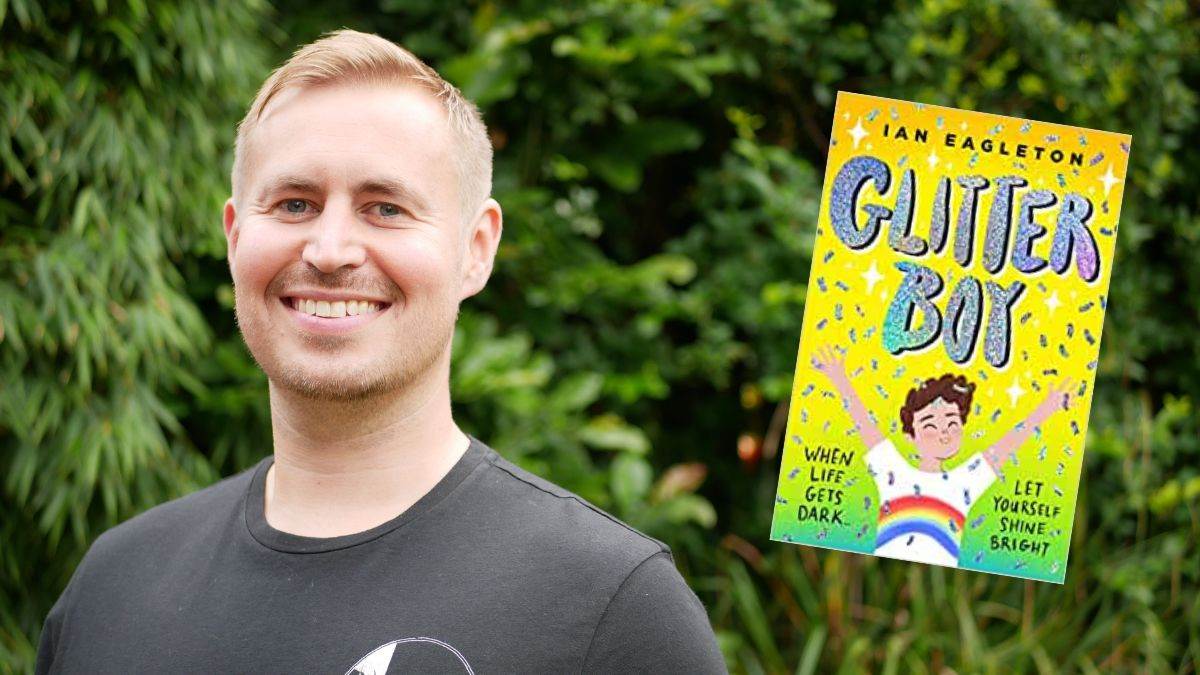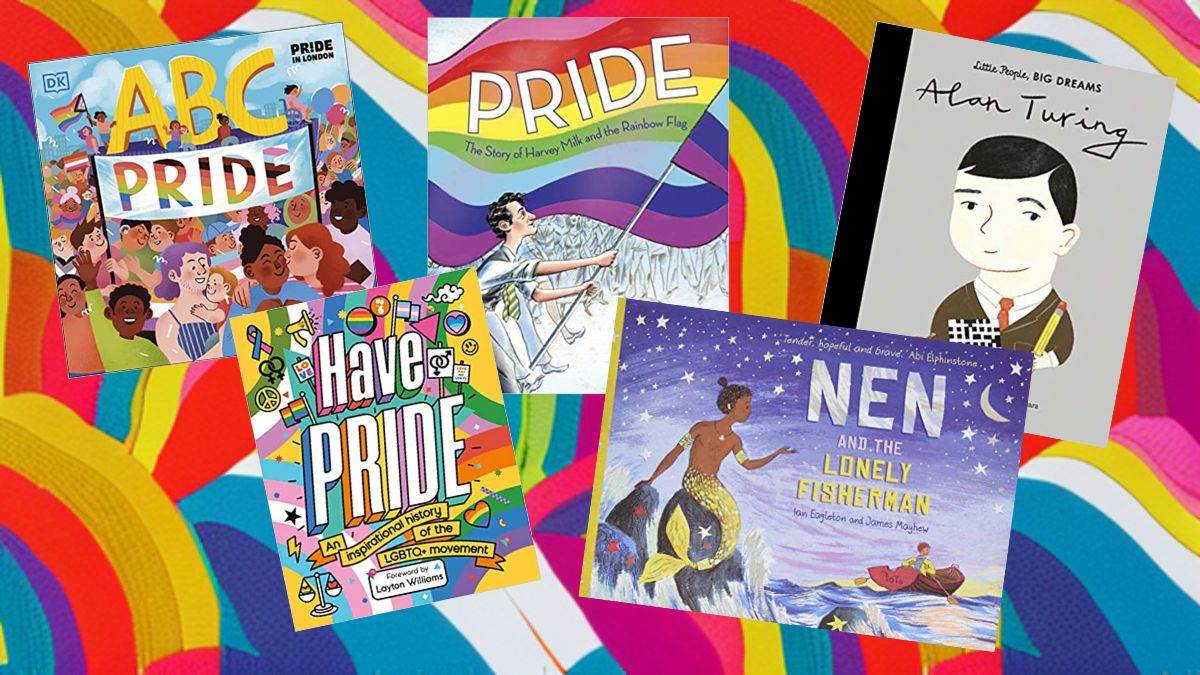Why we must include LGBTQ+ historical figures across the curriculum
Published on: 14 Chwefror 2023
Author and former teacher Ian Eagleton explains how broadening the range of historical figures studied can benefit all students.

In primary and secondary school, I knew nothing about the LGBTQ+ community. I certainly didn’t know of any LGBTQ+ trailblazers or role models. Growing up in the shadow of Section 28 meant that ‘gay’ was something to be ashamed of and feared. If you were different to the other boys, perhaps quieter or gentler, you were immediately targeted as ‘gay’ and this meant you were ignored, pushed, vilified, spat at, beaten up. All I knew was that being gay could never lead to a fulfilled and happy life.
In Glitter Boy, my LGBTQ+ inclusive debut middle-grade book, 11-year-old James is set a task by his teacher, Mr Hamilton, to find out about hidden figures throughout history. James and his friend Joel begin learning about a number of LGBTQ+ icons such as Sylvia Rivera, Marsha P. Johnson, Stormé DeLarverie, Harvey Milk, Justin Fashanu, James Baldwin, Barbara Gittings, Freddie Mercury, Keith Haring, Jackie Shane and many, many more.
It's a project that I wish I had been set as a young boy who was struggling with his sexuality and identity. How wonderful it would have felt to be seen and included!
LGBT History Month strikes me as a brilliant time to look at how inclusive and welcoming your curriculum is. Are our lives only mentioned every now and again in Circle Time? Do students only learn about heterosexual, cisgender artists, musicians, mathematicians, geographers and historians? Or do students have the opportunity to see the LGBTQ+ community represented throughout their time at school and in the books they read?
Certainly, as someone who has taught in primary schools for thirteen years, I was shocked at the lack of diversity in the curriculum. I was also bothered by the frequency at which older children would use phrases like ‘that’s so gay’ to describe something as ‘lame’ or ‘uncool’.
How books can make a difference
One year, I had to deal with a case of homophobic bullying and, as part of making changes throughout the school, I decided to review what I taught in Year 6. Our topic that term was on World War Two and this allowed me to teach the children about the life of Alan Turing and his role in the war. They were impressed by his intelligence, bravery, hard work, but also shocked at how he, as a gay man, was treated.
I think learning about him gave the children a sense of how pioneering and brilliant so many people in the LGBTQ+ community were, and are. It also gave them a chance to learn about someone who might be different to them and empathise with him, to discuss how unfair things had been for him and how they thought people in the LGBTQ+ community should be treated.
I think LGBT History Month is about looking back at how far we’ve come. A chance to learn about the people who fought for our rights and sacrificed so much. It is also a chance to reflect on how far we’ve come and how far we have to go. I think a lot of us in the LGBTQ+ community feel unsafe and scared at the moment – the way our trans siblings are being treated at the moment by the media and government is shocking and terrifying.
Books have the chance to show our students and young readers that they can change the world. They give them a blueprint, a roadmap, a template and show them how they can fight injustice. Books can be ‘weapons for the weak’. They teach us that the world does not just have to be about ‘what has been’ but can be about ‘what can be’.
In Glitter Boy, learning about LGBTQ+ pioneers certainly teaches James that he has the power and the agency to effect change, to stand up for himself, to take chances, to grab life and all the opportunities he has been given, and to be proud of who he is.
He discovers that people in the LGBTQ+ community can live happy, fulfilled, amazing lives full of love and freedom and that being true to yourself is how we can all make the world a better place.
Some books to read during LGBT History Month

ABC Pride by Louie Stowell, Elly Barnes and Amy Phelps
A is for Acceptance! B is for Belonging! C is for Celebrate!
ABC Pride introduces young readers to the alphabet through the colourful world of Pride. Children can discover letters and words in a fun and engaging way, while also learning more about the LGBTQIA+ community and how to be inclusive.
Little People Big Dreams: Alan Turing
This moving book features stylish and quirky illustrations and extra facts at the back, including a biographical timeline with historical photos and a detailed profile of the brilliant mathematician's life.
Pride: The Story of Harvey Milk and the Rainbow Flag by Rob Sanders and Steven Salerno
The very first picture book about the remarkable and inspiring story of the Gay Pride Flag! In this empowering true story, young readers will trace the life of the Gay Pride Flag, from its beginnings in 1978 with social activist Harvey Milk and designer Gilbert Baker to its spanning of the globe and its role in today’s world.
Have Pride: an inspirational history of the LGBTQ+ movement by Stella Caldwell and Sue Sanders
This inspirational history of the international LGBTQ+ movement will teach readers to accept and have pride in themselves and others, whatever their sexuality. It details the struggles and successes of LGBTQ+ movements around the world, looking at decriminalisation, the Stonewall riots and their legacy, global Pride movements, the HIV/AIDS crisis and equal marriage.
Nen and the Lonely Fisherman by Ian Eagleton and James Mayhew
The Polari-Prize winning picture book which reimagines the story of The Little Mermaid for today’s readers, following Nen and Ernest as they meet one moonlit night and fall in love. A lyrical, beautiful celebration of love, acceptance and faith, with a gentle message about how we treat our oceans, and each other.
Glitter Boy is out now.
Topics: Historical, LGBT+, Features

